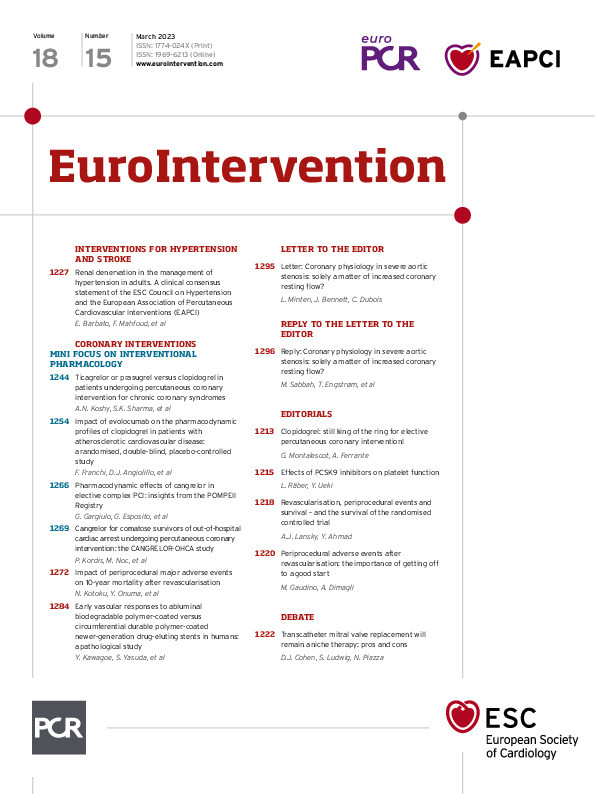We read with great interest the paper by Sabbah et al about long-term changes in coronary physiology in aortic stenosis (AS) patients1. We would like to congratulate the authors for this very nicely executed, prospective, observational study. It details a very interesting and pertinent field of research, and we acknowledge that repeated invasive assessment of coronary physiology and cardiac magnetic resonance imaging (MRI) are not easy to obtain in this patient population. However, we have some remarks and observations to make. First, as stated in the limitations section, not having performed measurements of absolute coronary flow and resistance in resting conditions, while technically possible, makes it hard to draw firm conclusions about the change in this parameter. Second, Table 3 in the manuscript shows a non-significant trend of increase in absolute hyperaemic coronary flow in the left anterior descending artery (LAD) (QLAD; p=0.26) and a trend towards a decrease in minimal microvascular resistance (Rμ,LAD; p=0.20). It is important to note that the lack of significant difference in these measurements is not the same as proving that these indices do not change after a valvular procedure. This is especially relevant when considering that the study population consisted of only 34 patients, and therefore, the analysis has inherently low statistical power to detect significant differences. Third, the authors showed that the left ventricular (LV) mass (LVM) and LV mass indexed (LVM[i]) to body surface area did significantly decrease six months after the valvular procedure. Consequently, this would mean that the QLAD/LVM(i) significantly increased and the Rμ,LAD/LVM(i) significantly decreased, although this was not reported in Table 3 of the manuscript. If the baseline coronary flow had been measured, the calculation of the microvascular resistance reserve and its change after six months could have provided additional valuable information2. Fourth, although statistically significant, the correlations between the LV stroke index and LV mass index on one side and the change in resting mean transit time on the other are only moderate. This is possibly a result of large variations in the thermodilution-derived technique under resting conditions, illustrating the inherent limitation of this technique. Furthermore, in the discussion section, the terms “global” and “regional” are used. Although we agree with the concept, the terms “absolute” and “relative” might be more appropriate for indexing these measurements, as the mass of perfused myocardium does not depict regional differences. Lastly, we think the minimal microvascular resistance is an important and clinically relevant parameter, since we are of the opinion that active patients with severe AS without important comorbidities reach their maximal myocardial demand during exercise and are, in fact, limited by this (e.g., angina, dyspnoea). The concept of a stable hyperaemic flow and an increased resting flow might result in a stable fractional flow reserve and an improved resting full-cycle ratio after aortic valve replacement in patients with coronary artery disease3. However, the opposite has also been reported, and further studies with a larger patient population are needed to draw definite conclusions45.
Funding
L. Minten is supported by the Research Foundation Flanders Grant 1194521 N.
Conflict of interest statement
The authors have no conflicts of interest to declare.

